The Duration of Oxygen and Glucose Deprivation (OGD) Determines the Effects of Subsequent Reperfusion on Rat Pheochromocytoma (PC12) Cells and Primary Cortical Neurons
- PMID: 37108268
- PMCID: PMC10138834
- DOI: 10.3390/ijms24087106
The Duration of Oxygen and Glucose Deprivation (OGD) Determines the Effects of Subsequent Reperfusion on Rat Pheochromocytoma (PC12) Cells and Primary Cortical Neurons
Abstract
Reperfusion is the fundamental treatment for ischaemic stroke; however, many ischaemic stroke patients cannot undergo reperfusion treatment. Furthermore, reperfusion can cause ischaemic reperfusion injuries. This study aimed to determine the effects of reperfusion in an in vitro ischaemic stroke model-oxygen and glucose deprivation (OGD) (0.3% O2)-with rat pheochromocytoma (PC12) cells and cortical neurons. In PC12 cells, OGD resulted in a time-dependent increase in cytotoxicity and apoptosis, and reduction in MTT activity from 2 h onwards. Reperfusion following shorter periods (4 and 6 h) of OGD recovered apoptotic PC12 cells, whereas after 12 h, OGD increased LDH release. In primary neurons, 6 h OGD led to significant increase in cytotoxicity, reduction in MTT activity and dendritic MAP2 staining. Reperfusion following 6 h OGD increased the cytotoxicity. HIF-1a was stabilised by 4 and 6 h OGD in PC12 cells and 2 h OGD onwards in primary neurons. A panel of hypoxic genes were upregulated by the OGD treatments depending on the duration. In conclusion, the duration of OGD determines the mitochondrial activity, cell viability, HIF-1a stabilization, and hypoxic gene expression in both cell types. Reperfusion following OGD of short duration is neuroprotective, whereas OGD of long duration is cytotoxic.
Keywords: HIF; OGD; PC12 cell; duration; neuron; rat; reperfusion.
Conflict of interest statement
The authors declare no competing interests.
Figures
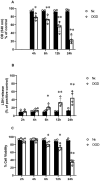

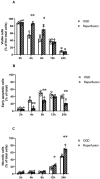




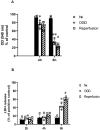
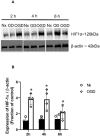
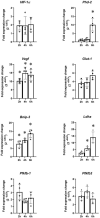
Similar articles
-
Protective effects of the knockdown of lncRNA AK139328 against oxygen glucose deprivation/reoxygenation-induced injury in PC12 cells.Mol Med Rep. 2021 Sep;24(3):621. doi: 10.3892/mmr.2021.12260. Epub 2021 Jul 2. Mol Med Rep. 2021. PMID: 34212979 Free PMC article.
-
Characterizing Ischaemic Tolerance in Rat Pheochromocytoma (PC12) Cells and Primary Rat Neurons.Neuroscience. 2021 Jan 15;453:17-31. doi: 10.1016/j.neuroscience.2020.11.008. Epub 2020 Nov 24. Neuroscience. 2021. PMID: 33246056
-
MiR-92b-3p regulates oxygen and glucose deprivation-reperfusion-mediated apoptosis and inflammation by targeting TRAF3 in PC12 cells.Exp Physiol. 2020 Oct;105(10):1792-1801. doi: 10.1113/EP088708. Epub 2020 Sep 4. Exp Physiol. 2020. PMID: 32818322
-
Beneficial effect of astragalosides on stroke condition using PC12 cells under oxygen glucose deprivation and reperfusion.Cell Mol Neurobiol. 2014 Aug;34(6):825-37. doi: 10.1007/s10571-014-0059-4. Epub 2014 May 8. Cell Mol Neurobiol. 2014. PMID: 24807460 Free PMC article.
-
β-Asarone protects PC12 cells against OGD/R-induced injury via attenuating Beclin-1-dependent autophagy.Acta Pharmacol Sin. 2012 Jun;33(6):737-42. doi: 10.1038/aps.2012.35. Epub 2012 Apr 30. Acta Pharmacol Sin. 2012. PMID: 22543703 Free PMC article.
Cited by
-
Neuroprotective Efficacy of Astragalus mongholicus in Ischemic Stroke: Antioxidant and Anti-Inflammatory Mechanisms.Cells. 2025 Jan 14;14(2):117. doi: 10.3390/cells14020117. Cells. 2025. PMID: 39851546 Free PMC article.
-
Region-specific brain decellularized extracellular matrix promotes cell recovery in an in vitro model of stroke.Sci Rep. 2025 Apr 7;15(1):11921. doi: 10.1038/s41598-025-95656-w. Sci Rep. 2025. PMID: 40195414 Free PMC article.
-
HERV-K (HML-2) Envelope Protein Induces Mitochondrial Depolarization and Neurotoxicity via Endolysosome Iron Dyshomeostasis.J Neurosci. 2024 Apr 3;44(14):e0826232024. doi: 10.1523/JNEUROSCI.0826-23.2024. J Neurosci. 2024. PMID: 38383499 Free PMC article.
References
-
- Lee N.T., Selan C., Chia J.S.J., Sturgeon S.A., Wright D.K., Zamani A., Pereira M., Nandurkar H.H., Sashindranath M. Characterization of a novel model of global forebrain ischaemia–reperfusion injury in mice and comparison with focal ischaemic and haemorrhagic stroke. Sci. Rep. 2020;10:18170. doi: 10.1038/s41598-020-75034-4. - DOI - PMC - PubMed
MeSH terms
Substances
Grants and funding
LinkOut - more resources
Full Text Sources
Medical

